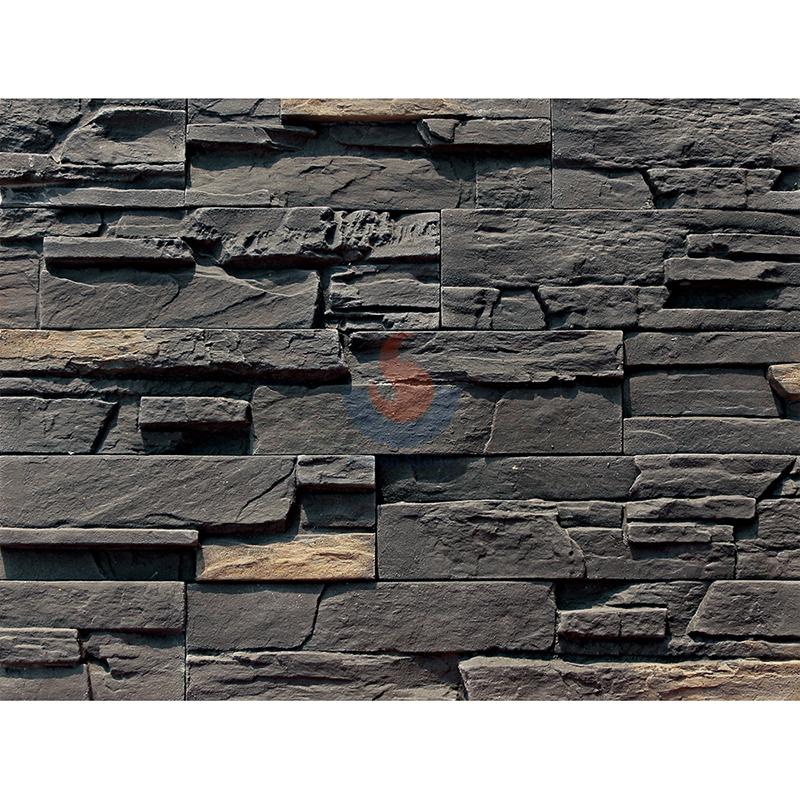
Environmentally Friendly Properties Of Artificial Stone Stacked Stone Wall Cladding -
As the concept of environmental protection has gained popularity, modern architectural design has paid more and more attention to the sustainability and environmental friendliness of materials. Artificial stone piled stone wall finishes have become the new preferred choice of designers and architects in the field of wall decoration because of their great environmental protection qualities and aesthetic impacts. This material not only satisfies people’s search for natural texture but also leads the emerging trend of green buildings with its ecologically friendly production technique and usage qualities.

China cultured stone artificial country rubble fieldstone wall cladding GB-I19
Definition and environmental protection concept of artificial stone wall finishes
Made by current technologies employing unsaturated polyester resin as a binder, blended with natural stone powder, glass powder, calcite and other inorganic powders, artificial stone wall finishes are a wall decorating material. Compared with traditional stone, artificial stone pays more attention to environmental protection in the production process. Reusing industrial waste exemplifies the idea of the circular economy and helps to lessen the consumption of natural resources.
Detailed description of environmental protection characteristics
Resource recycling: In the production process of artificial stone, a large amount of waste generated in the process of natural stone processing is used. Realizing the recycling of resources and lessening of the exploitation of fresh resources and environmental damage, these wastes are turned into raw materials for artificial stone following screening and treatment.
Energy-saving production process: The production of artificial stone does not require high-temperature sintering. It addresses the demand for development of a low-carbon economy by saving a lot of energy and lowering greenhouse gas emissions when compared with conventional stone processing.
Non-toxic and harmless: In the production process of artificial stone, no toxic substances are added, which ensures the environmental safety of the material. It won’t damage the human body and can be somewhat frequently employed in interior design.
Artificial stone can be developed into a range of colors depending on different needs, and the color distribution is uniform and the color difference is small, which lowers the excessive mining of particular minerals due of the search of specific colors.
Easy maintenance: The surface of artificial stone is smooth and not easy to absorb dust and dirt. It is easier to clean and maintain, reducing the dependence on water resources and chemical detergents during the cleaning process.
Artificial stone materials have strong weather resistance, can adjust to different climatic conditions, and have a long service life, therefore lowering the frequency of replacement and the creation of waste products.
Plasticity: Artificial stone can be made into various shapes and sizes according to design requirements, which improves the utilization rate of materials and reduces waste caused by inappropriate shapes.
Modern UV coating technology enables the effective and ecologically friendly surface treatment of fake stone, therefore lowering resource consumption and environmental pollution in the conventional grinding and polishing operation.
Practical application of environmental protection characteristics
In practical applications, artificial stone wall finishing not only brings beautiful visual effects to buildings, but also adds points to the green certification of buildings with its environmental protection characteristics. Artificial stone wall finishing can offer a lovely and eco-friendly alternative for public facilities, homes, or commercial space. Its use extends beyond wall decoration to include floor, furniture, and artwork production, so giving designers a large creative area.

GB-A21 artificial culture ledgestone wall cladding veneer
Artificial stone stacked stone wall finishing provides an ideal wall decoration material for modern buildings with its excellent environmental protection characteristics and beautiful effects. With its many colors and good physical qualities, it not only lessens reliance on natural resources but also serves a wide spectrum of design needs by lowering energy consumption and environmental pollution in the manufacturing process. With the continuous enhancement of society’s awareness of environmental protection and the continuous advancement of science and technology, artificial stone wall finishing is expected to play a greater role in future architectural design and become an important force in promoting the green development of the construction industry.




